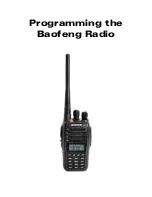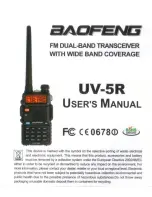
7
5.0 INSTALLATION
Study the front and rear panel drawings and become familiar with the controls,
signal input, outputs and power input.
5.1 Wiring the System for Video Transmission
• Connect an HDMI approved cable from the HDMI source to the input of the
HBT200T, and from the HBT200R to the display device.
• Make certain that the HDMI cables are securely plugged into the source and
display devices as well as the HBT200 units. Always use high quality cables,
and the shortest length possible, for best results.
• Connect the HBT200T and HBT200R power adapters to the AC source and
then to the extenders.
• Turn on the HDMI source and HDMI destination devices and observe the
source signal on the inputs of all of the destination devices. Check the LED
indicators on the transmitter and receiver to verify proper operation.
• The unit begins to function as soon as the AC adapter is connected to the unit
and AC power. There is no power switch.
5.2 Wiring the System for Contol Signal Transmissions
Serial and/or IR control signals may be transmitted over the Cat 5e/6 cable
without impacting video performance.
For two-way serial control, use a standard serial cable (pinout shown on page 6)
at each end of the HBT200 system.
To control a TV or other device at the receiver end (zone location) connect an
IR sensor or control device output to the HBT200T IR input, and connect an IR
emitter to the HBT200R output (see illustrations).
To control a source or other device at the head end (transmitter location) connect
an IR sensor to the HBT200R IR input, and connect the HBT200T IR output to
the device via 3.5mm patch cord or IR emitter.
Tip = Signal
Ring = +5V
Sleeve = (GND)
Tip = Signal
Ring = Ground
Sleeve = +12 Volts
INPUT
IR SENSOR
PINOUT
Tip = +5V
Ring = Signal
Sleeve = N.C.
Tip = Signal
Ring = Ground
Sleeve = +12 Volts
OUTPUT
IR bLASTER
PINOUT






























